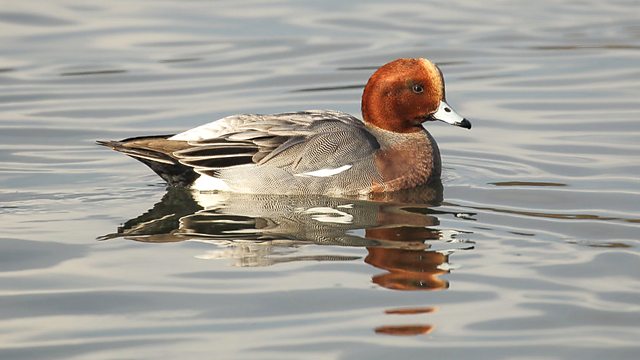Winterwatch 2022 episode 7: Chris Packham and Michaela Strachan bring us the best wildlife from Wild Ken Hill in Norfolk. Megan McCubbin is investigating a rather surprising evolution among crabs in Northern Ireland, and she also looks into how our warming winters are seeing more short stopping in migrating birds. Iolo Williams is in his element on the Isle of Mull as he discovers a hen harrier roost and looks into the movements of some satellite-tracked individuals.
At Wild Ken Hill in Norfolk, Chris Packham and Michaela Strachan discuss some of our most topical wildlife issues. Megan McCubbin visits a marine lab, where she gets a close look at some of the strange and wonderful inverts that use the mudflats at Castle Espie, while Iolo Williams uncovers Mull’s most magical wildlife secrets.
From the Isle of Mull, Iolo Williams introduces us to some of his northerly neighbours – the great northern divers – and live from WWT Castle Espie in Northern Ireland, Megan McCubbin gets to know the oldest endemic mammal on the island – the Irish hare. We also meet an inspiring wildlife photographer whose deteriorating eyesight hasn’t stopped him from following his dreams.
Springwatch, Autumnwatch and Winterwatch, sometimes known collectively as The Watches, are annual BBC television series which chart the fortunes of British wildlife during the changing of the seasons in the United Kingdom. The programmes are broadcast live from locations around the country in a primetime evening slot on BBC Two. They require a crew of 100 and over 50 cameras, making them the BBC’s largest British outside broadcast events. Many of the cameras are hidden and operated remotely to record natural behaviour, for example, of birds in their nests and badgers outside their sett.
Springwatch begins on the Spring Bank Holiday and is broadcast four nights each week for three weeks. After the success of the first Springwatch in 2005, the BBC commissioned a one-off special, Autumnwatch, which became a full series in 2006. Winterwatch began in 2012, broadcast in January or February.
Winterwatch 2022 episode 7
The hen harrier (Circus cyaneus) is a bird of prey. The genus name Circus is derived from Ancient Greek kirkos ‘circle’, referring to a bird of prey named for its circling flight. The specific cyaneus is Latin, meaning “dark-blue”. While many taxonomic authorities split the northern harrier and the hen harrier into distinct species, others consider them conspecific. It breeds in Eurasia. The term “hen harrier” refers to its former habit of preying on free-ranging fowl.
It migrates to more southerly areas in winter. Eurasian birds move to southern Europe and southern temperate Asia. In the mildest regions, such as France and Great Britain, hen harriers may be present all year, but the higher ground is largely deserted in winter.
This is a typical harrier, which hunts on long wings held in a shallow V in its low flight during which the bird closely hugs the contours of the land below it. Northern or hen harriers hunt primarily small mammals, as do most harriers. Up to 95% of the diet comprises small mammals. However, birds are hunted with some regularity as well, especially by males. Preferred avian prey include passerines of open country (i.e. sparrows, larks, pipits), small shorebirds and the young of waterfowl and galliforms.
Supplementing the diet occasionally are amphibians (especially frogs), reptiles and insects (especially orthopterans). The species has been observed to hunt bats if these are available. Larger prey, such as rabbits and adult ducks are taken sometimes and harriers have been known to subdue these by drowning them in water. Harriers hunt by surprising prey while flying low to the ground in open areas, as they drift low over fields and moors. The harriers circle an area several times listening and looking for prey. Harriers use hearing regularly to find prey, as they have exceptionally good hearing for diurnal raptors, this being the function of their owl-like facial disc. This harrier tends to be a very vocal bird while it glides over its hunting ground.




